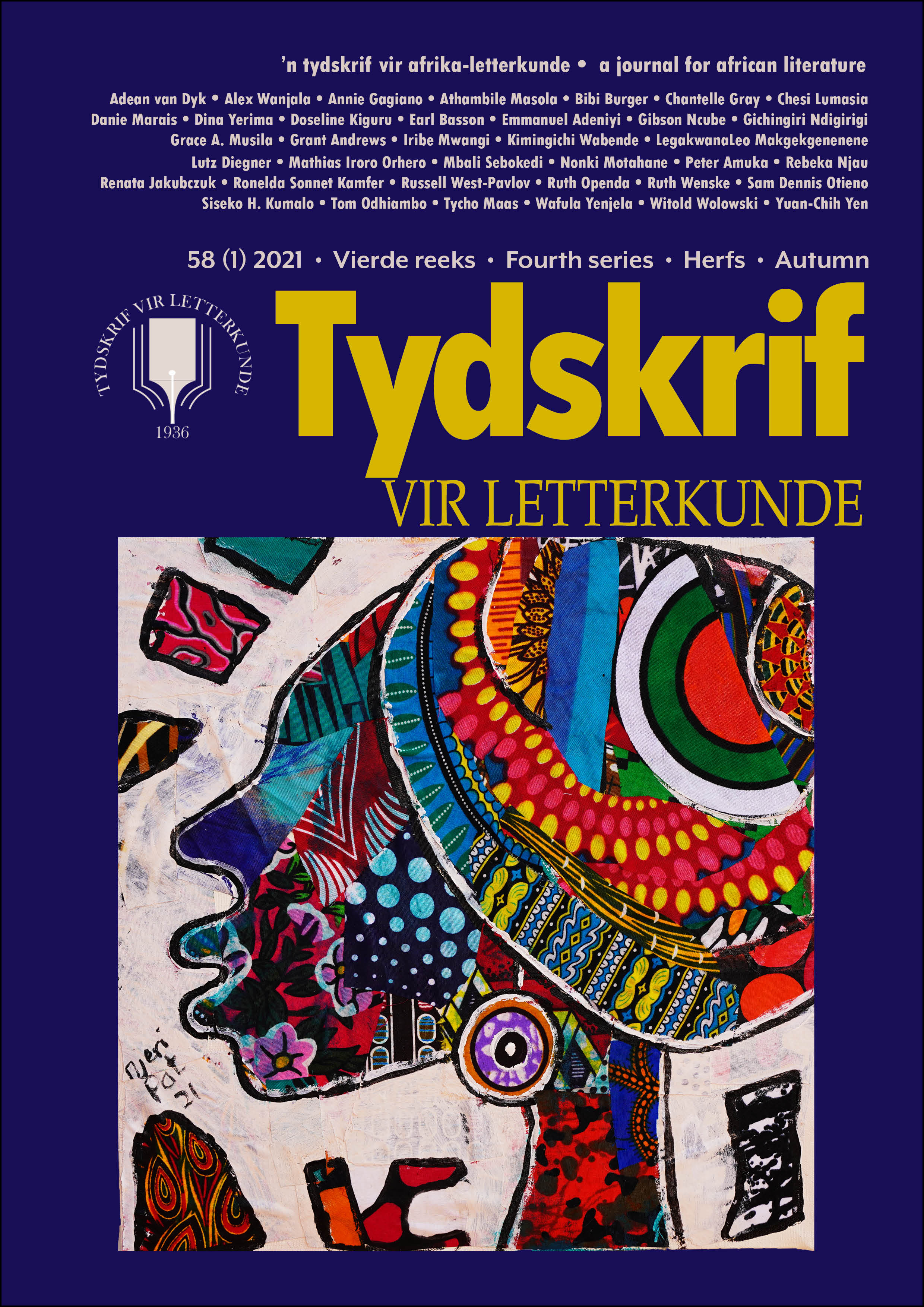Imagining the Kenyan Canaan dream journey in cyber space
DOI:
https://doi.org/10.17159/tl.v58i1.8391Keywords:
cyberspace, journey motif, emerging genres, online liveness, digital oralityAbstract
With technological advances made in contemporary times, new literary genres have emerged in digital space, with an attendant rise in the performance of rhetorical discourse on social media platforms. In the run up to Kenyan elections on 8 August 2017, the opposition leader Raila Odinga, whose father Jaramogi Oginga Odinga wrote a book titled Not Yet Uhuru, packaged himself as the biblical Joshua with a quest to liberate Kenyans and take them to the Promised Land, Canaan. This biblical analogy depicted in Odinga’s speeches propelled Kenyans to engage in creative descriptions of the Canaan journey using social media. This play on imaginings of a Canaan journey, as displayed in cyber space, became a performance of biblical analogies, dreams, and expectations by rival characters in an ensuing online drama. In this article I examine the digital orality in the emergent texts found on Kenyan social media platforms as a form of online liveness. It focuses on social media exchanges that are inspired by Odinga’s quest (as captured in his speeches) to take Kenyans to Canaan. Placed within the framework of online liveness studies, it analyses how, using digital media, spatially dispersed Kenyans shared creative memes, messages, and tweets that allowed them to vicariously undertake the Canaan journey online. I utilise Carl Jung’s theory of archetypes and collective unconscious to explore the journey motif, framed within an analogy of the Israelites’ journey from captivity, with Odinga portrayed as a hero who pursues the political quest of delivering Kenyans to the land of Canaan.
Downloads
References
@ingrid_donnet (Ingrid), “Heee...... tutaafford kweli.” Twitter. 2 Aug. 2017, https://twitter.com/ingrid_donnet/status/892783000617975808.
@ntvkenya (Ken Okoth). “After the book of Joshua comes Judges then the book of Kings, we are in Jerusalem, Canaan we see you #SupremeCourtDecides.” Twitter. 1 Sep. 2017. https://twitter.com/ntvkenya/status/903563660777443328.
@Ochako_D (Ochako Dagg.). “#SupremeRuling *“And I will send the bees ahead of you to drive your enemy out of your way”*—Exodus 23:28.” Twitter. 20 Sep. 2017. https://twitter.com/Ochako_D/status/910471834549866496.
@sokolako(sokolako). “Canaan-bound bus stopped by NTSA, chang'aa-happy driver arrested.” Twitter. 30 Jul. 2017. https://twitter.com/Sokolako/status/891737649525936128/photo/1.
@VictorKipronoK1 (Rabbi). “With or without ferries Canaan is a reality #FerryImefika.” Twitter. 3 Aug, 2017. https://twitter.com/VictorKipronoK1/status/893138346700140547.
Auslander, Philip. Liveness: Performance in a Mediatized Culture. Routledge, 2008.
Couldry, Nick. “Liveness, ‘reality,’ and the mediated habitus from television to the mobile phone.” The communication review vol. 7, no. 4, 2004, pp. 353–61, 2004. DOI: https://doi.org/10.1080/10714420490886952.
Dixon, Steven Digital Performance: A History of New Media in Theatre, Dance, Performance Art and Installation. MIT P, 1995.
Finnegan, Ruth. “How oral is oral literature?” Bulletin of the School of Oriental and African studies vol. 37, no. 1, pp. 52–64, 1974. https://www.jstor.org/stable/614104.
Hall, Stuart. “The work of representation.” Representation: Cultural representations and signifying practices, edited by Stuart Hall. SAGE, 1997, 13–74.
Jung, Carl Gustav. “The concept of the collective unconscious.” Collected Works vol. 9, no. 1, 1936, pp 99–104.
Kaschula, Russell H. “Exploring the oral-written interface with particular reference to Xhosa oral poetry.” Research in African Literatures vol. 28, no. 1, 1997, pp. 173–91. https://www.jstor.org/stable/3819927.
Kaschula, Russell H. “Technauriture as a Platform to Create an Inclusive Environment for the Sharing of Research.” Searching for Sharing: Heritage and Multimedia in Africa, edited by Daniela Merolla and Mark Turin. Open Book, 2017, pp. 41–59.
Kim, Suk-Young. Oxford Research Encyclopedia of Literature. Oxford U P, 2016.
King James Bible. Proquest, 1996.
Lawson, Gerard. “The hero’s journey as a developmental metaphor in counseling.” The Journal of Humanistic Counseling, Education and Development, vol. 44, no. 2, 2005, pp. 134–44.
Mnenuka, Angelus. “Online Performance of Swahili Orature: The Need for a New Category?” Eastern African Literary and Cultural Studies vol. 5, no. 3–4, 2019, pp. 274–97. DOI: https://doi.org/10.1080/23277408.2019.1685752.
Mortimer, Mildred. “African journeys.” Research in African Literatures vol. 22, no. 2, 1991, pp. 169–75.
Odinga, Jaramogi Oginga. Not Yet Uhuru: An Autobiography. East African Educational, 1967.
Odinga, Raila. “NASA leader Raila Odinga is confident of reaching Canaan.” YouTube. Uploaded by KTN News Kenya. 15 Oct. 2017. https://youtu.be/YRkC8y89nlA?t=31.
Odinga, Raila. “Raila’s final campaign address at the Nairobi Uhuru Park Rally.” YouTube. Uploaded by NTV Kenya. 5 Aug. 2017. https://youtu.be/ONd8ye-wfb4.
Pulse Live Kenya. “Kenyans excited reactions four days to Canaan.” YouTube. Uploaded by Pulse Live Kenya. 4 Aug. 2017. https://youtu.be/4IIc1l-l2DQ.
SDE. “Hilarious memes as Kenyans react to popular Canaan trip.” The Sunday Standard. 2017. https://www.standardmedia.co.ke/entertainment/local-news/2001250803/hilarious-memes-as-kenyans-react-to-popular-canaan-trip#
Downloads
Published
Issue
Section
License
Copyright (c) 2021 Tydskrif vir Letterkunde

This work is licensed under a Creative Commons Attribution-ShareAlike 4.0 International License.


 https://orcid.org/0000-0001-6465-6584
https://orcid.org/0000-0001-6465-6584


.png)